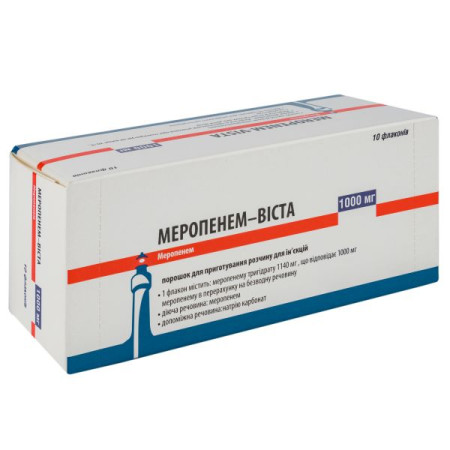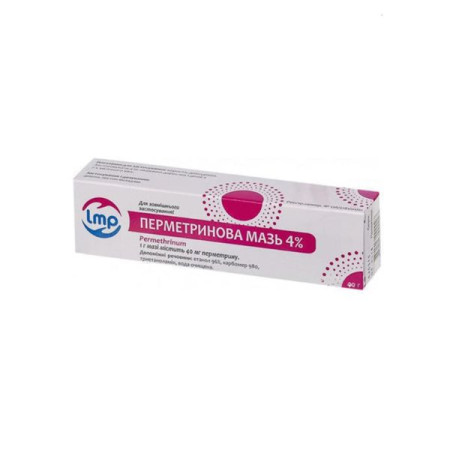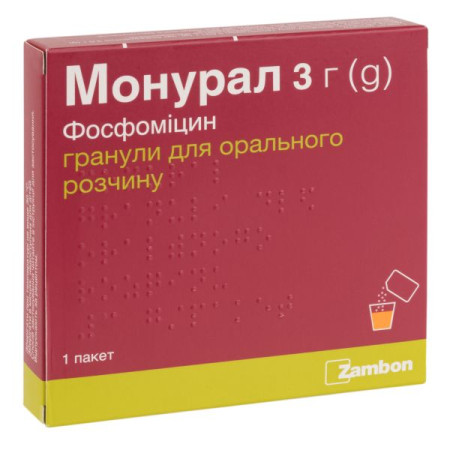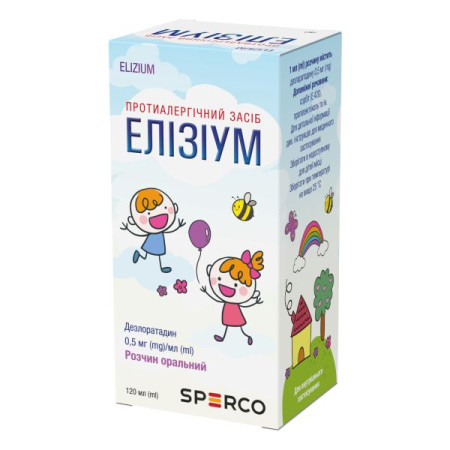Ciprofarm Dex ear drops 3.5 mg/ml + 1 mg/ml bottle 7.5 ml

Instructions for use Ciprofarm Dex ear drops 3.5 mg/ml + 1 mg/ml bottle 7.5 ml
Composition
active ingredients: ciprofloxacin; dexamethasone;
1 ml of the drug contains ciprofloxacin hydrochloride 3.5 mg, calculated as ciprofloxacin 100% anhydrous substance 3.0 mg; dexamethasone calculated as 100% dry substance 1.0 mg;
Excipients: hydroxyethylcellulose; benzalkonium chloride; sodium acetate trihydrate; glacial acetic acid; sodium chloride; disodium edetate; tyloxapol; boric acid; water for injections; sodium hydroxide solution and/or diluted hydrochloric acid.
Dosage form
Ear drops, suspension.
Main physicochemical properties: liquid containing white or almost white particles that are easily suspended when shaken.
Pharmacotherapeutic group
Combined preparations containing corticosteroids and antimicrobials. Dexamethasone and antimicrobials. ATX code S02 C A06.
Pharmacological properties
Pharmacodynamics
Mechanism of action
These ear drops contain the fluoroquinolone antimicrobial agent ciprofloxacin. The mechanism of antibacterial action of ciprofloxacin is due to its ability to inhibit type II topoisomerase (DNA gyrase) and topoisomerase IV, which are important for many processes of the DNA life cycle, such as replication, transcription, repair and recombination.
Typically susceptible species of microorganisms in acute otitis media with tympanic membrane shunt: aerobic gram-positive microorganisms (Staphylococcus aureus (methicillin-susceptible), Streptococcus pneumoniae); aerobic gram-negative microorganisms (Haemophilus influenzae, Moraxella catarrhalis, Pseudomonas aeruginosa).
Species for which acquired resistance may be problematic: aerobic Gram-positive microorganisms (Staphylococcus aureus (methicillin-resistant)).
Typically susceptible species of microorganisms in acute otitis externa: aerobic gram-positive microorganisms (Staphylococcus aureus (methicillin-sensitive); aerobic gram-negative microorganisms (Pseudomonas aeruginosa).
The mechanism of action of the corticosteroid dexamethasone is not yet fully understood. However, it is known that corticosteroids bind to receptors in the cytoplasm, translocate to the nucleus, and then bind to corticosteroid-responsive elements on corticosteroid-responsive genes. Corticosteroids are known to increase the transcription of anti-inflammatory proteins and also suppress the expression of several inflammatory genes. The anti-inflammatory activity of dexamethasone is approximately 25 times greater than that of hydrocortisone.
Pharmacokinetics
Ciprofloxacin
Absorption
Plasma levels of ciprofloxacin are very low after topical application of a 3 mg/1 mg combination ear drops, suspension to pediatric patients. After instillation of 4 drops in each ear (equivalent to 0.84 mg ciprofloxacin), peak ciprofloxacin concentrations (Cmax) were reached within 1 hour and ranged from less than 0.50 ng/mL to 3.45 ng/mL with a mean Cmax of 1.33 ng/mL. After reaching Cmax, ciprofloxacin is eliminated from plasma with a half-life of approximately 3 hours, which is similar to that in adults after an oral dose.
Distribution
Animal studies indicate that ciprofloxacin is distributed to all major organs and tissues. The highest concentrations are generally achieved in the liver and kidneys. Low concentrations are observed in the brain, fat and bone. Increasing the dose leads to proportional increases in tissue concentrations. The distribution and elimination of radioactivity are similar after single and repeated doses. Ciprofloxacin does not bind extensively to plasma proteins.
Ciprofloxacin was excreted in the milk of lactating animals. The presence of radioactivity in the milk was primarily due to the presence of unchanged parent drug. Pregnant animals administered 14C-ciprofloxacin distributed radioactivity to the fetus, but at lower levels than those observed in maternal plasma.
Biotransformation
The metabolism of ciprofloxacin is similar in animals and humans. Ciprofloxacin is not extensively metabolized and is excreted mainly in the urine unchanged. Metabolism results in metabolites with significantly less microbiological activity than the parent drug. In in vitro studies in animals and in human liver microsomes, ciprofloxacin inhibited biotransformation by cytochrome P450 CYP1A and CYP3A. Drug interactions have been demonstrated for several specific drugs after concomitant administration with intravenous and oral ciprofloxacin. Some of these interactions have been associated with the ability of ciprofloxacin to inhibit biotransformations involving the P450 isoenzymes CYP1A and CYP3A.
Elimination
Ciprofloxacin is excreted in the urine, feces and bile. In animals, after intravenous administration, 51% of the dose is recovered in the urine and 47% in the feces. In animals and humans, excretion is the major route of elimination. No significant enterohepatic circulation has been observed in animals.
After a single instillation of 4 drops in both ears (8 drops) in children, the mean plasma Cmax of ciprofloxacin was 1.33 ± 0.96 ng/ml. Thereafter, the ciprofloxacin concentration decreased and was not quantifiable (<0.50 ng/ml) 6 hours after dosing, indicating low systemic exposure. The mean Cmax of ciprofloxacin (1.33 ng/ml) is 570-fold lower than the mean Cmax of 760 ng/ml reported after a therapeutic oral dose of ciprofloxacin 250 mg in adult subjects. The mean t1/2 of ciprofloxacin was approximately 3 hours, which is similar to that in adults after an oral dose. The systemic exposure to ciprofloxacin observed in clinical studies after topical application to the ear was maximal in children with acute otitis media with a tympanic membrane shunt, due to the presence of a tympanic membrane shunt without otorrhea. The systemic exposure to ciprofloxacin in patients with acute otitis externa after topical application to the ear is not expected to be higher than in children with a tympanic membrane shunt, due to the low bioavailability of topical agents through the intact tympanic membrane.
Dexamethasone
Absorption
Plasma dexamethasone levels are very low following topical otic administration of a 3 mg/1 mg combination ear drops, suspension to pediatric patients. Following instillation of 4 drops in each ear (equivalent to a 0.28 mg dose of dexamethasone), peak dexamethasone concentrations (Cmax) were achieved within 1 hour with a mean Cmax of 0.09 ng/mL. After reaching Cmax, dexamethasone is eliminated from plasma with a half-life of approximately 4 hours, which is similar to that in adults following an oral dose.
Distribution
The mean volume of distribution in humans is 0.576 to 1.15 L/kg. In animals, corticosteroids are distributed to muscle, liver, skin, intestines, and kidneys. In rats, dexamethasone crosses the placenta, but fetal plasma levels are below maternal levels. Dexamethasone also passes into breast milk, but in small amounts. Approximately 77–84% of dexamethasone is bound to serum albumin.
Biotransformation
The main route of elimination of dexamethasone is hepatic metabolism. Approximately 60% of the dose in humans is found in the urine as 6-(beta)-hydroxydexamethasone, with 6-(beta)-hydroxy-20-dihydroxymethasone also considered an important urinary metabolite. Parent dexamethasone was not detected in the urine. The main P450 isoenzyme responsible for the biotransformation of dexamethasone is CYP3A4. The clearance of dexamethasone in humans is 0.111-0.225 l/h/kg, with a terminal half-life of 3-4.7 hours. The metabolism of dexamethasone is induced by anticonvulsants and inhibited by isoniazid and the potent P450 CYP3A4 inhibitor itraconazole.
Children
After a single instillation of 4 drops in both ears (8 drops) in children, the mean plasma Cmax of dexamethasone was 0.90 ± 1.04 ng/mL. Thereafter, dexamethasone concentrations declined and were unquantifiable (<0.05 ng/mL) 6 hours after dosing, indicating low systemic exposure. The mean Cmax of dexamethasone (0.90 ng/mL) is 8.8-fold lower than the mean Cmax of 7.9 ng/mL reported after an oral dose of dexamethasone 0.5 mg in adult subjects. The mean t1/2 of dexamethasone was approximately 4 hours, similar to that in adults after an oral dose. The systemic exposure to dexamethasone observed in clinical studies after topical application to the ear is maximal in children with acute otitis media with a tympanic membrane shunt, due to the presence of a tympanic membrane shunt without otorrhea. The systemic exposure to dexamethasone in patients with acute otitis externa after topical application to the ear is not expected to be higher than in children with a tympanic membrane shunt, due to the low bioavailability of topical agents through the intact tympanic membrane.
Indication
Ciprofarm® Dex is indicated for the treatment of the following infections in adults and children caused by strains of susceptible microorganisms (see section "Pharmacodynamics"):
Acute otitis media with tympanic membrane shunt. Acute otitis externa.
Contraindication
Hypersensitivity to ciprofloxacin, other quinolones, dexamethasone or to any of the excipients included in the preparation.
Viral (e.g., chickenpox, herpes simplex) and fungal ear infections.
Interaction with other medicinal products and other types of interactions
No drug interaction studies have been conducted.
However, it has been shown that systemic use of some quinolones enhances the effect of the oral anticoagulant warfarin and its derivatives, causing transient increases in serum creatinine in patients who are simultaneously taking cyclosporine.
Oral ciprofloxacin has been shown to inhibit cytochrome P450 isoenzymes CYP1A2 and CYP3A4 and to alter methylxanthine (caffeine, theophylline) metabolism. Following topical otic administration, plasma concentrations of ciprofloxacin are low and it is unlikely that a P450-mediated interaction with a concomitant drug would result in clinically significant changes in methylxanthine plasma levels.
Application features
This medicine is for ear use only. It is not for use in the eyes, inhalation, or injection.
If otorrhea persists after a full course of therapy or if two or more episodes of otorrhea occur within 6 months, further evaluation is recommended to rule out an underlying condition (cholesteatoma, foreign body, or tumor).
As with other antibiotics, prolonged treatment with this drug may result in overgrowth of nonsusceptible organisms, including bacterial strains, yeasts, and fungi. In the event of superinfection, the drug should be discontinued and appropriate therapy should be initiated. If symptoms persist after one week of treatment, further evaluation is recommended to reassess the condition and treat.
Serious, sometimes fatal hypersensitivity reactions (anaphylaxis), some of which occurred after the first dose, have been reported in patients receiving systemic quinolones. Some reactions were accompanied by cardiovascular failure, loss of consciousness, angioedema (including swelling of the larynx, pharynx or face), airway obstruction, dyspnoea, urticaria and pruritus. Treatment with the drug should be discontinued at the first appearance of skin rash or other signs of hypersensitivity. Serious acute hypersensitivity reactions may require immediate emergency treatment. Oxygen should be administered and a patent airway should be maintained as clinically indicated. Tendon inflammation and rupture may occur with systemic fluoroquinolones, including ciprofloxacin, particularly in elderly patients and those receiving corticosteroids. Treatment with Ciprofarm® Dex should be discontinued at the first sign of tendon inflammation.
Corticosteroids may reduce resistance and promote the occurrence of bacterial, viral, fungal infections or mask clinical signs of infection, preventing detection of antibiotic ineffectiveness, or suppress hypersensitivity reactions to the components of the drug.
This medicine contains benzalkonium chloride, which is irritating and may cause skin reactions.
Ability to influence reaction speed when driving vehicles or other mechanisms
Ciprofarm® Dex has no or negligible influence on the reaction rate when driving or operating other mechanisms (see section “Adverse reactions”).
Use during pregnancy or breastfeeding
Pregnancy
Since there are no animal studies or well-controlled studies in pregnant women with the combination of ciprofloxacin and dexamethasone, Ciprofarm® Dex should not be used during pregnancy. These drugs should be prescribed only if the potential benefit to the pregnant woman justifies the potential risk to the fetus. Lactation
Ciprofloxacin and corticosteroids are excreted in human milk after oral administration. It is not known whether topical administration of the drug would result in systemic absorption sufficient to produce detectable amounts of the drug in human milk. A risk to the breastfed infant cannot be excluded. Caution should be exercised when administering this drug to nursing mothers.
Fertility
There are no data on the effect of Ciprofarm® Dex on human fertility. Animal studies of topical dermal preparations have shown effects on male reproductive organs with long-term use of dexamethasone at high doses. Animal reproduction studies at doses 6 times the usual daily human oral dose have shown no evidence of impaired fertility.
Method of administration and doses
Adults
4 drops into the external auditory canal of the affected ear(s) twice daily for 7 days.
Children
The efficacy and safety of this drug have been demonstrated in children from 6 months of age for the treatment of acute otitis media with tympanic membrane shunt and from 1 year of age for the treatment of acute otitis externa (see section “Children” for use in children under 6 months of age for acute otitis media with tympanic membrane shunt and children under 1 year of age for acute otitis externa). Ciprofarm® Dex can be used in the same dose as in adults.
Elderly patients
Overall, no difference in safety or effectiveness was observed between elderly and younger adult patients.
Hepatic or renal failure (mild or moderate) does not alter the pharmacokinetics of ciprofloxacin or dexamethasone after systemic administration.
After topical application of Ciprofarm® Dex ear drops to the ears, a slight increase in plasma concentrations of ciprofloxacin and dexamethasone is possible in patients with severe renal or hepatic insufficiency. However, since the systemic exposure to ciprofloxacin or dexamethasone is low after topical application to the ears, any increase in systemic concentration due to renal or hepatic dysfunction will still be significantly lower than the plasma concentrations that are well tolerated by children and adults after oral or intravenous administration at recommended doses.
No dose adjustment is required for patients with renal or hepatic impairment.
Method of application
For use in the ear only.
Patients should be instructed to shake the bottle vigorously before use. The suspension should be warmed by holding the bottle in the hand for several minutes to avoid dizziness that may occur as a result of instillation of a cold suspension. The patient should lie with the affected ear upward, and the drops should be instilled by pulling the auricle back. Patients with acute otitis media with a tympanic membrane shunt should press the tragus inward 5 times to facilitate the penetration of the drops into the middle ear. This position should be maintained for about 5 minutes to facilitate the penetration of the drops into the ear. Repeat in the opposite ear if necessary.
To prevent contamination of the tip and limit the risk of bacterial entry, care should be taken not to touch the auricle or external auditory canal and surrounding areas, or other surfaces with the tip of the bottle. The bottle should be kept tightly closed during storage.
Children
The safety and efficacy of Ciprofarm® Dex have not been established in children under 6 months of age with acute otitis media with tympanic membrane shunt and in children under 1 year of age with acute otitis externa. In exceptional circumstances, Ciprofarm® Dex may be used in this group of children after a very careful benefit-risk assessment by the physician, taking into account the lack of clinical experience.
Overdose
Overdose with topical application is unlikely. However, ingestion of Ciprofarm® Dex, which may result in overdose, or prolonged topical therapy in the ear may lead to suppression of the hypothalamic-pituitary-adrenal axis. Although a decrease in growth velocity in children and/or suppression of plasma cortisol concentrations may be more pronounced after substantial overdose or prolonged treatment (e.g. several months) with Ciprofarm® Dex, the effect is expected to be transient (several days to several weeks) and readily reversible without long-term sequelae.
In the event of accidental ingestion, treatment of acute overdose is usually supportive and systemic therapy and may include, first and foremost, induction of emesis and gastric lavage.
Adverse reactions
Infections and infestations: candidiasis.
Immune system disorders: hypersensitivity.
From the nervous system: paresthesia (ringing in the ears), dizziness, headache, crying.
From the side of the organs of hearing and vestibular apparatus: ear pain, ear discomfort, hearing loss, tinnitus, otorrhea, ear plugs, ear itching, fungal ear infections, drug residue, ear swelling.
Vascular: hyperemia.
Gastrointestinal: vomiting, dysgeusia.
Skin and subcutaneous tissue disorders: skin exfoliation, erythematous rash.
General disorders and administration site conditions: tympanic membrane shunt obstruction, irritability, fatigue.
Serious, sometimes fatal hypersensitivity reactions (anaphylaxis), some of which occurred after the first dose, have been reported in patients receiving systemic quinolones.
Some reactions were accompanied by cardiovascular failure, loss of consciousness, angioedema (including swelling of the larynx, pharynx or face), airway obstruction, dyspnoea, urticaria and pruritus.
The development of secondary infection has been observed after the use of a combination of steroids and antimicrobials.
Tendon ruptures of the shoulder, hand, Achilles tendon, or other tendons requiring surgical repair or resulting in long-term disability have been reported in patients receiving systemic fluoroquinolones. Studies and postmarketing experience with systemic fluoroquinolones suggest that the risk of such ruptures may be increased in patients receiving corticosteroids, particularly in the elderly and in patients with high tendon loads, including the Achilles tendon. Clinical trial and postmarketing data have not demonstrated a clear association between ciprofloxacin use in the ear and musculoskeletal and connective tissue disorders.
Expiration date
2 years.
The shelf life after opening the bottle is 28 days.
Do not use the drug after the expiration date indicated on the package.
Storage conditions
Keep out of reach of children.
Packaging
7.5 ml per bottle. 1 bottle per pack.
Vacation category
According to the recipe.
Producer
JSC "Farmak".
Location of the manufacturer and its business address
Ukraine, 04080, Kyiv, Kyrylivska St., 74.
There are no reviews for this product.
There are no reviews for this product, be the first to leave your review.
No questions about this product, be the first and ask your question.















